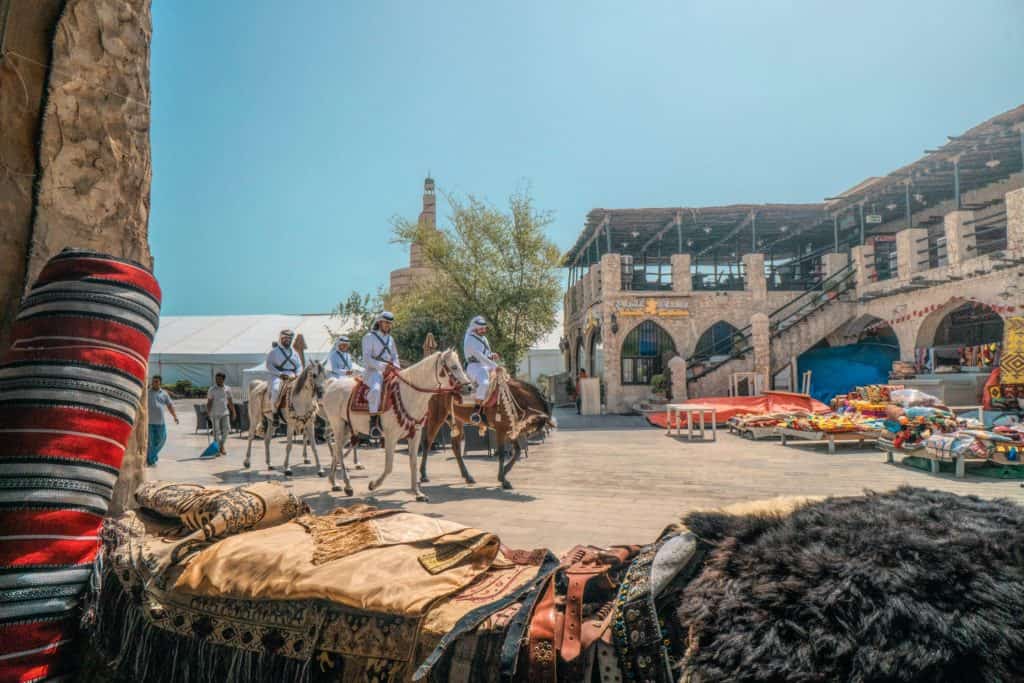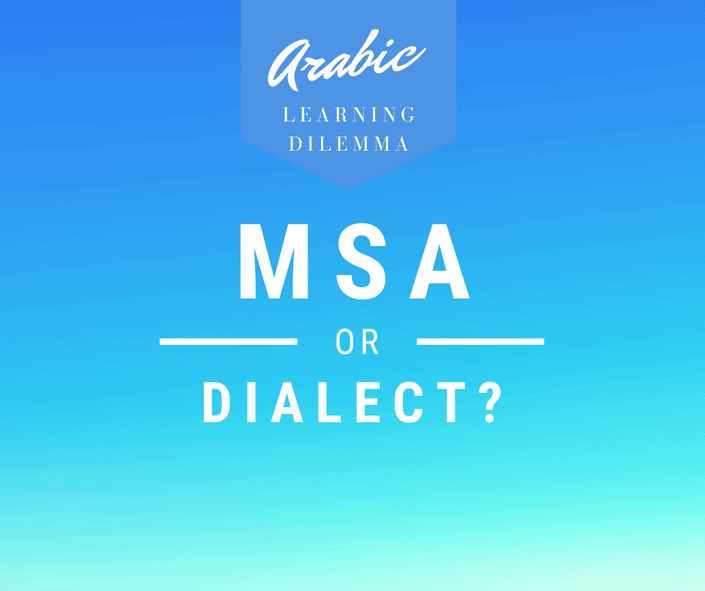New students of Arabic and curious minds alike are often perplexed by the differences between Modern Standard Arabic (MSA) and the various Arabic dialects.
And as they learn about the Arabic variants across the Arab world, they are often confused or overwhelmed by the differences among these various local colloquial Arabic versions from one country to another.
Probably the biggest divide in these Arabic dialects exists between West and Eastern Arab countries, or what’s known as the Maghreb countries and the Arab nations of the Middle East.
Since most learners, researchers and readers are more familiar with Middle Eastern Arab countries and their dialects, I’ll focus in this post on what sets Maghrebi Arabic apart from Mashreqi Arabic dialects.
By doing that I’ll be touching on factors such as demographics, history and linguistics but without getting into the boring nitty-gritty stuff.
Table of Contents
1- Vocabulary
The most obvious difference is the presence of terms that don’t exist in Mashreqi dialects. However, this doesn’t mean there is more Arabic in the other dialects than Maghrebi.
All Arabic dialects contain plenty of foreign words; it’s just that you find different foreign words in different dialects due to the specific history, geography and demographics. This point is explained in detail in bullet 5 below.
The Maghrebi dialect is a mix of Arabic, Berber, Spanish, Italian and French words. It is only normal to find many Berber words in Maghrebi since over 62% of the population in the Maghreb region are Berbers or of Berber descent.
For instance, a key is often called Sarut in Moroccan dialect, which is a Berber word. In the Middle East, it’s simply the Standard Arabic word Muftah or miftah.
The Berber influence is even more pronounced (no pun intended) in the phonology of Maghrebi dialect, as I’ll explain in bullet 2.
There is a big presence of French influence in Maghrebi since the French have colonized most of the Maghreb region and French is the second language in these countries.
Actually, there is a francophone lobby (social elite) who have pressured the various governments in the Maghreb to maintain French position as a quasi-official language and the language of business in the country. But this is a topic for another day.
However, the use of French is not only limited to the Francophone elite and business world; even the general population find themselves using a significant amount of French in their daily life, particularly in matters of administration, medicine and technology.
The use varies from dispersed words in a sentence to full sentences, depending on who is speaking and the situation at hand.
Spanish words are also present in Moroccan and Mauritanian subsets of Maghrebi due to the Spanish colonization and geographical proximity.
This is only normal just like the presence of Arabic in Spanish and Andalusian Spanish. For example, in the north of Morocco, it’s common to hear kitchen items such as nibira and cutcheras(sp), which are derived from Spanish words for the fridge and utensils.
2- Phonetics
To the people of Mashriq, Maghrebi Arabic sounds too fast, making it even harder for them to understand or learn the dialect. It is false and true at the same time and I’ll explain why.
It is false in the sense that Maghrebis, especially Moroccans and Algerians, don’t speak at a faster rate than their Mashriqi counterparts.
It’s more like an acoustic illusion.
Maghrebis don’t necessarily speak fast. It’s the lack of vowels that makes it sound speedy. And that’s the influence Berber has on the Maghrebi Arabic.
Let’s not forget that people of the Maghreb spoke Berber first before learning and assimilating Arabic into their daily speech over the years. In the process, their Berber linguistic habits seeped into their Arabic.
Let me explain! For instance, let’s take the sentence “I hit you and left.” In Egyptian Arabic, it would be said roughly like this: Darabtek w-misheet. That makes up about 5 syllables. In Moroccan, for instance, it would be said as DRBTek w-msheet using only two syllables in pretty much the same sentence.
This is the reason people in the Maghreb find dialects like Egyptian and Levantine a bit musical, easier on the ear and , to some, kind of more romantic.
Going back to the Berber influence, it’s a dialect known for the minimal use of vocalization or vowels. You can often hear words in Berber, Moroccan and Algerian dialects with a cluster of three to five or even six consonants. For example, the verb DRBTKM has six consonants and it means “I hit you (2nd person plural).”
To break it down, it would be DRB [hit] T [I in the past tense]+ KM [You].
Moroccan Arabic grammar is quite easy to pick up for anyone interested. And the example above shows exactly that, especially when you don’t have to worry much about vocalizations.
3- Intonation
This one is somewhat tied to the preceding point, but could be hard for the untrained ear to discern.
Due to the lack of vocalizations in the Maghrebi Arabic speech, it is often dominated with a higher pitch, ascending, and sometimes, choppy intonation as opposed to Mashreqi Arabic.
The higher pitch is caused by the faster articulation of sounds produced by the abundance of clusters of consonants.
As to the ascending tone, it is largely the Berber influence. If you hear Berbers talking to each other, you will notice a somewhat choppy flow of sounds and the utterances tend to go in a crescendo before suddenly dropping.
This Berber feature has influenced how Moroccan sound their words and sentences, which is quite a natural effect.
Learners of Arabic can easily pick up on this nuanced difference when they gain enough exposure to an Arabic dialect and later get to hear Maghrebi Arabic.
4- Exposure & Media
While all dialects have their distinct features and their own share of difficulty in learning, what makes Maghrebi Arabic more difficult is the lack of exposure.
Egyptian, Levantine and Gulf Arabic have enjoyed the lion’s share on the Arab media scene, making them quite familiar in Maghrebi households. That made people of the Maghreb quite versed in these dialects.
However, that happened at the expense of Maghrebi Arabic, and people of the Mashriq barely know any Moroccan or Algerian variant, for instance.
As a result, non-Arabs introduced to the Arab language find themselves exposed to MSA and Mashreqi dialects only and with minimal to no exposure to Colloquial Maghrebi.
However, in the past four to seven years, a wave of Maghrebi pop singers who insisted on using Moroccan, Algerian and Tunisian Arabic have gained quite a popularity in the Arab world. Arab youths and even Arab journalists all know now what words like bezzaf , barsha, kanbghik and zween mean.
This recent trend has certainly reversed the situation and increased interest in colloquial Maghrebi Arabic.
Although colloquial Maghrebi Arabic doesn’t enjoy the same media and drama coverage as the other Arab dialects of the Middle East, the trend is changing. Social media has contributed to this recent reversal as well.
5- History
As one can easily see in Tunisian or Moroccan vocabulary, for instance, you can tell these Maghrebi dialects carry a rich historical and ethnic heritage.
Arabs, Berbers, Jews, French, Spaniards, Italians and Western Africans have all co-existed or succeeded each other in this part of the world. As a result, each one of these groups left their mark on the local customs and cuisine and, more importantly, the language.
To get a better appreciation of this phenomenon in Morocco, for example, I’d recommend reading this introductory resource for Moroccan Arabic and culture to see how these elements unsurprisingly intertwine.
But to understand the linguistic differences between Maghrebi and Mashreqi dialects, a quick look at the regional influence through history and geography becomes necessary.
For instance, in the Levant and the Gulf one can easily spot the Turkish and Persian influences respectively. In the Gulf region, you hear words like khush for “good” and Qahwadji (for the person who makes coffee) being borrowed and used as if they had been an Arabic word for thousands of years. Add to that the cuisine and names of dishes and that influence becomes more apparent.
The same could be said for Turkish linguistic and culinary influence in the Levant, the Hijaz and Egypt. Words like Pasha, Bih, Agzakhana are just a few of hundreds of words used daily in that part of the world.
However, as you move west to the Maghreb region, these “foreign” words disappear to leave room for Spanish, Italian, bastardized French, Sub-Saharan and Berber words. Similarly, you can see the influences on the local cuisine, clothing and music.
But since we are talking about language, we will keep it strictly at a linguistic level. The name of the mystical African music of Gnawa , which is quite popular in Morocco, refers to “the Guineans.”
A stew pot in Morocco is called Gamila, which is the bastardized French word La Gamelle. Unmarried man is called Zoufri, which comes from the French word Les Ouvriers (workers). And there are hundreds of words that Maghrebis use in their French or Spanish version or some other variation instead of using its Arabic counterparts.
And to name a few, the words for train, pharmacy, sidewalk and bank account are almost always referred to in their French or Spanish words, depending on what part of the country or the Maghreb you are in.
Conclusion:
The point of this post is to highlight a few main factors that set Maghrebi and Mashreqi Arabic dialects apart. In my opinion, there is no difficult or easier Arabic dialect.
Your own learning objectives, motivation level and learning style will be the determining factors in making your preferred Arabic dialect easier or more difficult to learn.
Regardless of what dialect you’d like to learn, a good starting point is to learn the basics of Arabic before you branch out into a dialect. It would be wise to learn Modern Standard Arabic as the trunk of a tree and the various Arabic dialects as its branches. There are no branches without a trunk.





